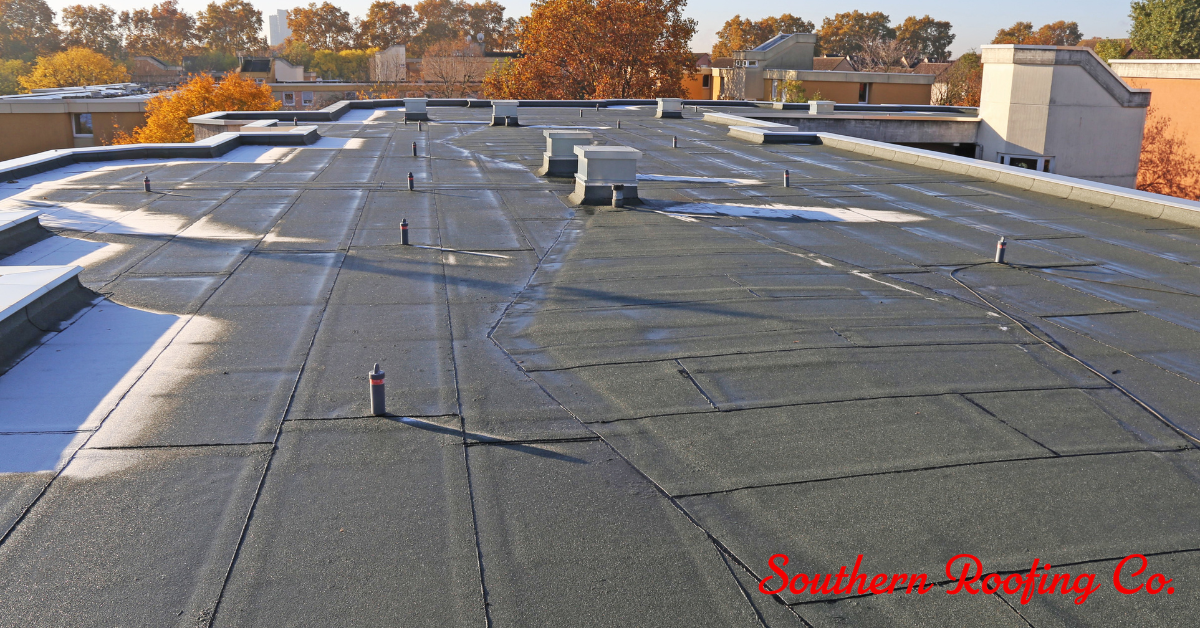
Every business owner or property manager eventually faces the daunting task of deciding on the best roofing system for their commercial space. While options abound, the primary debate often centers around flat roofs versus pitched roofs. Let's dive deep into the advantages and nuances of each type to provide clarity for your next roofing contractor consultation.
Flat Roofs: The Modern Commercial Staple
Flat roofs are synonymous with modern commercial buildings. They're versatile, space-saving, and cater to the architectural trends that favor simplistic lines.
Advantages of Flat Roofs
1. Cost-Effective Installation: The straightforward design of flat roofs often means quicker installation times. Speedier installations can translate into reduced labor costs.
2. Maximized Usable Space: One of the biggest perks is the ability to house various utilities like HVAC units, solar panels, or even satellite dishes without them being overly visible from the ground.
3. Easy Access for Maintenance & Repairs: Without slopes, flat roofs generally provide a safer environment for roofing contractors to conduct inspections, routine maintenance, or roof repairs.
4. Modern Aesthetic & Design Flexibility: This roof type allows architects and designers greater flexibility when mapping out internal spaces, as there are no sloped ceilings to contend with.
5. Efficient Insulation & Energy Savings: Flat roofs can be easily fitted with a consistent layer of insulation, helping to maintain indoor temperatures.
Challenges of Flat Roofs
1. Water Drainage Concerns: Unlike pitched roofs, flat roofs lack a natural slope to facilitate water runoff. This can lead to ponding or pooling of water, especially after heavy rains, increasing the risk of leaks and reducing the roof's lifespan.
2. Roof Material Durability: Some flat roofing materials may be more susceptible to punctures and abrasions, especially in high foot traffic areas or places where equipment is installed.
3. Higher Maintenance Needs: To prevent potential issues like leaks, regular inspections by a roofing contractor are crucial. This could mean higher long-term maintenance costs.
4. Insulation Challenges: If not adequately insulated, flat roofs can become significant sources of heat loss during the winter and heat gain during the summer, leading to increased energy costs.
5. Limited Lifespan: Generally, a flat roof might have a shorter lifespan compared to some pitched roof materials. As a result, property owners may find themselves contemplating roof replacement more frequently.
Pitched Roofs: The Classic Contender
When picturing a traditional commercial building, you might visualize a pitched roof. These roofs have slopes, and their design has been used for centuries.
Advantages of Pitched Roofs
1. Enhanced Water Drainage: The inclined design of pitched roofs inherently promotes water runoff, reducing the risk of water pooling and related damage.
2. Longer Lifespan: Due to their slope and the materials used, pitched roofs often fare better against adverse weather conditions like heavy snow, reducing wear and tear.
3. Improved Insulation & Ventilation: The space below a pitched roof, often used as an attic, provides a natural insulation layer, aiding in energy efficiency. The design allows for more effective ventilation, helping to regulate indoor temperatures and reduce moisture-related issues.
4. Increased Storage or Living Space: The space beneath a pitched roof can be converted into additional living or storage areas, offering increased utility for commercial or residential properties.
5. Enhanced Property Value: Many buyers have a preference for pitched roofs due to their traditional look and the perceived benefits, potentially making properties with these roofs more desirable in the real estate market.
Challenges of Pitched Roofs
1. Higher Initial Costs: Pitched roofs often require more materials and intensive labor during installation, translating to a higher upfront cost compared to flat roofs.
2. Maintenance Difficulties: The sloped nature of pitched roofs can make them harder to access for regular maintenance, inspections, or installations.
3. Space Limitations: Pitched roofs might not be as efficient in utilizing the available space, especially for taller commercial buildings where a flat roof could provide additional usable area.
4. Insulation Challenges: The varied surface areas and angles in a pitched roof might require different insulation strategies, complicating the process.
5. Durability Concerns in Extreme Weather: In areas prone to high winds or hurricanes, the edges of pitched roofs can be susceptible to wind lift.
Final Thoughts: Which One is Better?
The decision between a flat or pitched roof for your commercial building depends on various factors:
- Budget: If initial costs are a concern, flat roofs often edge out.
- Maintenance: Consider future repair and maintenance costs. How accessible do you need your roof to be?
- Aesthetic & Function: Do you want a rooftop garden or space for equipment? Or are you leaning towards a traditional aesthetic with added insulation benefits?
Regardless of your choice, always collaborate with a trusted roofing company or contractor like Southern Roofing Co. We'll provide expert advice, ensuring your commercial space is both functional and visually appealing. Contact us today to request a quote!

